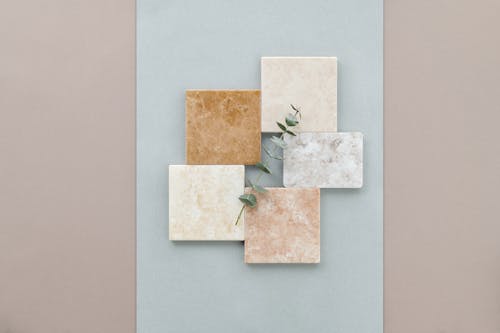Marbles are important building material for thousands of years. Marbles are found in mountains. Due to marble style, grace and elegance, marble is used in the palace of kings and queens. It is a luxurious option for interior designing and flooring. It is a more susceptible material as compared to normal ceramic files and other natural stones found in nature.
There are many advantages and disadvantages of using marble.


Advantages
- It is an elegant, upscale, and beautiful material.
- It is a natural material
- It can easily be polished
- It helps in radiating floor heating
Disadvantages
- It is a porous stone and it requires sealing.
- It can have scratches and can easily stained.
- It is an expensive material.
- It is a slippery and brittle material.
- It feels cold underfoot.

The Geology of marble
Marble is a popular natural stone that is mined and cut into slabs and tiles for a variety of residential and commercial building applications, including counters, floors, and wall tiles. It is a metamorphic rock formed when sedimentary rock, such as limestone, is converted under heat and pressure into solid rock with fine color and vascular patterns. Marble is sometimes confused with granite; however, granite is a flammable rock based on volcanic magma, not a horizontal sedimentary rock. Granite usually has a green or spotted pattern, while marble usually has a wavy line pattern.
Price of marble flooring
Marble floors are important building material, and they are well worth it. They usually fall on a high level of natural stones, and they usually do not last as long as latticework, granite, and other natural stones. Marble floors usually cost $ 10 to $ 20 per square foot for building materials alone, and some special marbles run up to $ 40 per square foot. 1 Ceramic tile is usually about half the cost of marble, although the cost of installation work can be compared well. Professional installation work adds $ 3 to $ 7 per square foot. The installation will cost more than jobs that require more complex structures or cuts; labor costs are low if the design involves the simple formation of square or rectangular tiles.


Maintenance and repair of marble flooring
Once installed, the general care of the marble floor is easy; requires the same type of sweeping and damping that you can with a ceramic tile floor. However, unlike ceramic tile, marble has holes in it, so you should not let water float and stand on top. Stagnant water can seep into a rock and change color. Marble has a pH on the side of the base (alkaline), due to its origin as a sedimentary limestone. This means that it can have chemical reactions whenever it comes in contact with acidic substances.2 This can include many types of food, sauces, beverages, and cleaning products. Unfortunately, the color-coded spots from these items usually do not fade. This can be prevented by using a chemical that enters the sealer, as well as the upper lid after installation. But for best protection, the top cover needs to be reused annually.
Design of marble flooring


The great advantage of marble floor tile is that it quickly elevates the look of the space, giving it a regal bear that is hard to imitate. And marble is available in many colors, even in stunning multicolor blends, providing flexible options for a variety of decorative patterns. Tiles can also be cut into rectangles, as well as triangles of various sizes to create an intricate mosaic installation.
Because it is a world product, all the pieces of marble tile used on all floors of the same type; there is no other like it in the whole world. In the case of multi-colored marble, this variation may well mean, that there are distinctive features that come out of every tile. With solid colored marble, the color change is very subtle and low, but your floor will still stand out with its personality.






